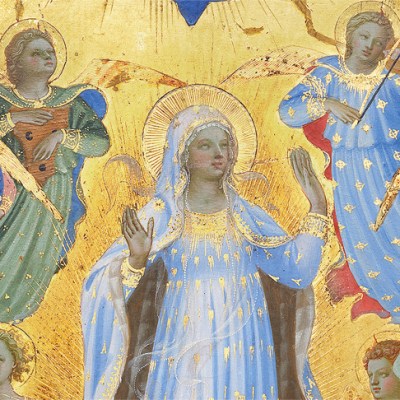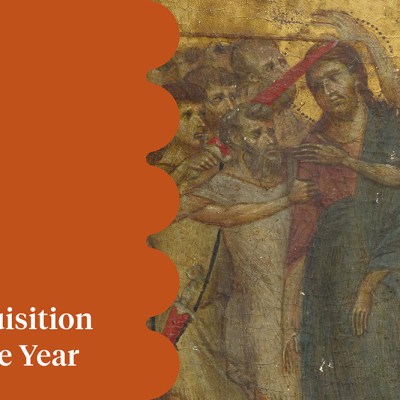Ashmolean Museum, Oxford
The Crucifixion with the Virgin, Saint John the Evangelist and the Magdalen (early 1420s), Fra Angelico
In September, the Ashmolean Museum in Oxford launched a campaign to raise the funds needed to buy The Crucifixion (1420s), a small gold-ground panel by Fra Angelico. The work had been in a private collection in the UK for two centuries until this year, when it was sold at Christie’s to an overseas buyer for £5m. The government then barred its export on the grounds of its cultural and historical importance, giving domestic buyers until the end of October to make a bid. Thanks to a series of major donations by groups including Art Fund and the National Heritage Memorial Fund, as well as thousands of smaller individual donations, the museum has now raised the £4.5m required to purchase the panel – a reduction in the work’s market price. There are vanishingly few works by the Florentine master in public collections in the UK: the National Gallery and the Courtauld in London both have fragments of larger altarpieces in their collections, but the Ashmolean is the only museum outside London to own a work by Fra Angelico. The Crucifixion joins a large triptych panel by the artist, from later in his career, in the Ashmolean’s collection.
The Crucifixion with the Virgin, Saint John the Evangelist and the Magdalen (early 1420s), Fra Angelico. Photo: © 2023 Christie’s Images Ltd
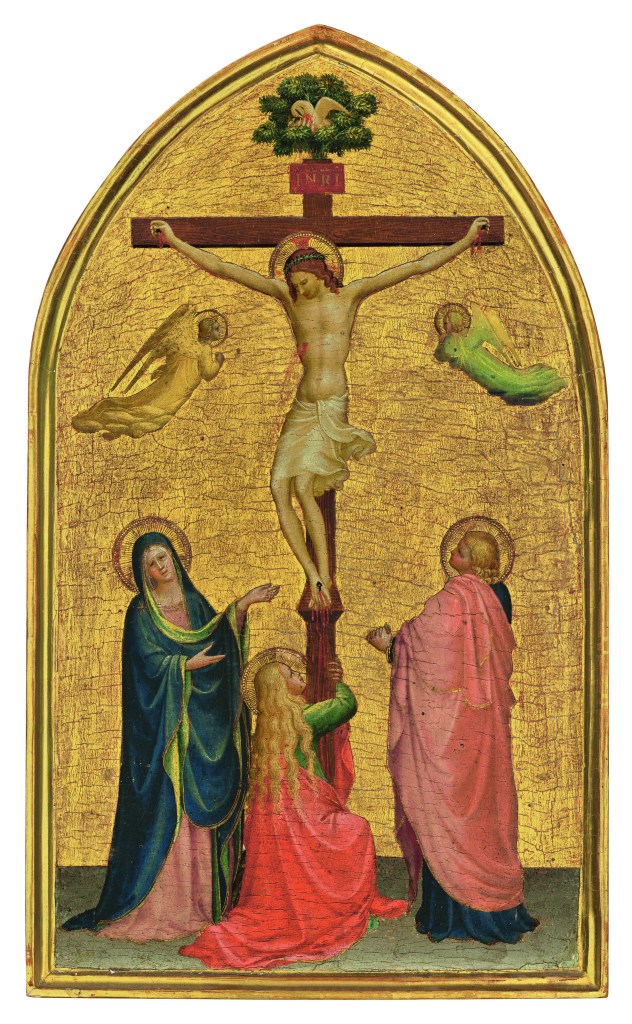
National Museum of Western Art, Tokyo
Portrait of Antonietta Gonzales (1595), Lavinia Fontana
Of the Renaissance women artists who have been the subject of growing interest in recent years, Lavinia Fontana stands out as one of the most exceptional. Born in Bologna in 1552, Fontana studied under her father, Prospero Fontana, and worked as a studio assistant to Giorgio Vasari for a period, before pursuing painting as a full-time career and becoming possibly the very first professional woman artist in western Europe. She painted mythological and religious works, but is best known for the portraits that she produced on commission, such as the family portrait of Bianca degli Utili Maselli and six of her children (and dog), which was purchased by the Legion of Honor in San Francisco earlier this year. The NMWA in Tokyo has now announced its acquisition of her Portrait of Antonietta Gonzales (1595) from Rob Smeets Gallery at TEFAF Maastricht earlier this year. Gonzales was the daughter of the nobleman Petrus Gonsalvus and, like her father, had hypertrichosis – an affliction that at the time was thought to be evidence of innate animalistic qualities. Despite this, Fontana has painted her in courtly dress, holding up a letter that spells out her noble lineage.
Portrait of Antonietta Gonzales (1595), Lavinia Fontana
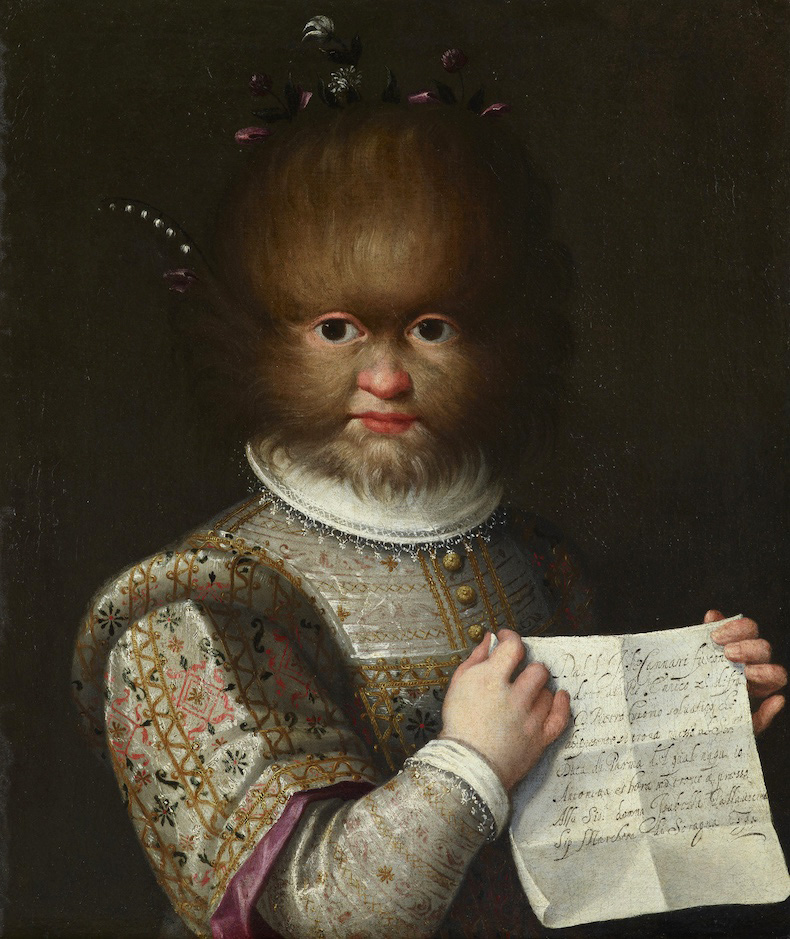
Palazzo Ducale, Mantua
Christ and the Pilgrims on the Road to Emmaus (c. 1720–25), Giuseppe Bazzani
Giuseppe Bazzani is not one of the best-known Italian artists of the 18th century, but in Mantua, Lombardy – the artist’s birthplace – he is celebrated as one of the country’s leading lights, and the city’s churches are adorned with religious scenes painted by him. An important work from the early part of his career has now joined their number in the city’s public collections. The Palazzo Ducale – built between the late 13th and the 17th century by the Gonzaga family, and occupied by such illustrious figures as Isabella d’Este before being converted into a museum in the 20th century – has acquired Bazzani’s large canvas Christ and the Pilgrims on the Road to Emmaus (c. 1720–25), based on the biblical story of the resurrected Christ appearing in front of two pilgrims after Passover.
Christ and the Pilgrims on the Road to Emmaus (c. 1720–25), Giuseppe Bazzani. Photo: Andrea Parisi
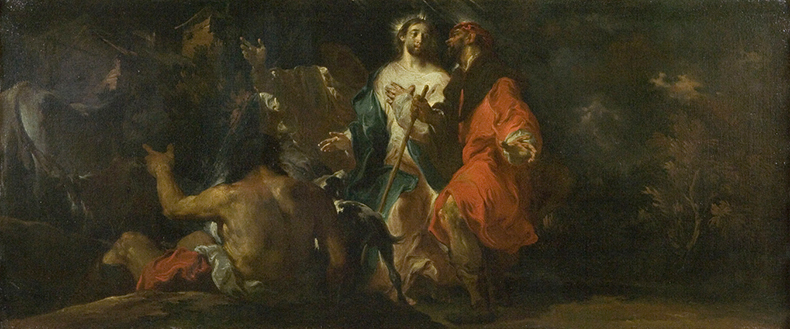
J. Paul Getty Museum, Los Angeles
The Descent from the Cross with Saint Francis and another Friar (c. 1669), Jan de Bisschop, after Jacopo Ligozzi
The J. Paul Getty Museum has acquired a tender drawing by the 17th-century Dutch painter and engraver Jan de Bisschop showing Christ being brought down from the Cross by Saint Francis of Assisi and a group of others. The work, executed in pen, brown ink and red chalk with a brown wash, is based on an earlier work by Jacopo Ligozzi, held in the Metropolitan Museum of Art’s collection. Ligozzi’s drawing was intended as a preparatory study for a larger painting, but was finished and painstakingly highlighted with gold. Bisschop enlarged the scene and widened the perspective, broadening out the stormy-looking sky behind the cross and adding the outline of Jerusalem’s Church of the Holy Sepulchre on the horizon.
The Descent from the Cross with Saint Francis and another Friar (c. 1669), Jan de Bisschop, after Jacopo Ligozzi
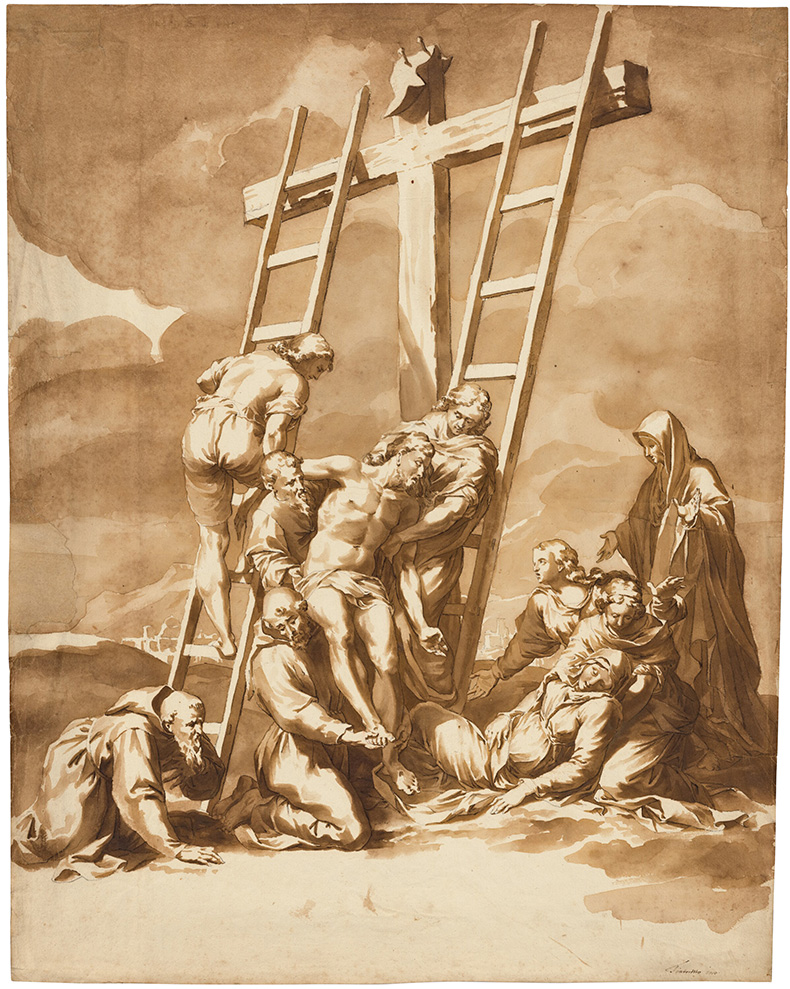
Toledo Museum of Art
Abyssinian Queen (2024), Yatreda ያጥሬዳ
Yatreda ያጥሬዳ, a collective of artists from Ethiopia, Kenya and Canada, have throughout 2024 been producing work in their role as digital artists in residence at the Toledo Museum of Art. Their House of Yatreda, a multi-sensory immersive installation, was exhibited alongside the museum’s hit show ‘Ethiopia at the Crossroads’, which traced the history of the country through an array of extraordinary artworks and artefacts. In a first for a major US institution, the Toledo Museum has now purchased an NFT by Yatreda ያጥሬዳ using cryptocurrency. At the request of Yatreda ያጥሬዳ, the museum used USD Coin to buy Abyssinian Queen (2024), a black-and-white single-channel video work that depicts a queen being carried through the Ethiopian forest on a throne – one of a series of works inspired by the queens of ancient Ethiopia. ‘When we buy a new artwork from a French gallery, we pay in euros,’ said the museum’s director, Adam Levine. ‘In this case, we are purchasing from the web3 artist collective Yatreda ያጥሬዳ, so it only made sense to try to transact in their preferred currency.’
Abyssinian Queen, an NFT of single-channel video (2024) by Yatreda ያጥሬዳ. © the artists
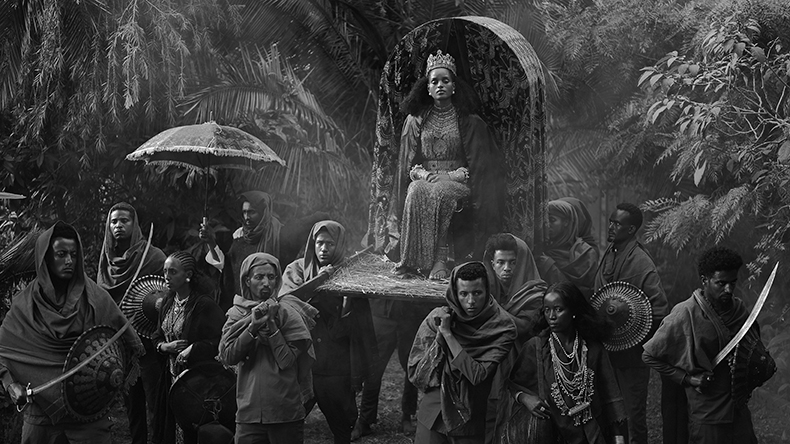
Musée du Louvre, Paris
Three portrait miniatures by French artists
The Louvre’s decorative arts department has added to its collection of European portrait miniatures by acquiring three works by 18th-century French artists. Two are by the neoclassical painter Marie-Gabrielle Capet, who painted numerous miniatures, many of which are housed in the Louvre already. One of these new additions is a self-portrait, while the other is a larger miniature showing Baroness Dannery holding her infant son in her arms. The third miniature is by the painter Henri François Riesener, the grandson of the celebrated cabinet-maker Jean Henri Riesener and the uncle of Eugène Delacroix. A portrait of two girls in diaphanous white dress, it is the first miniature by Riesener to enter the Louvre’s collection.
